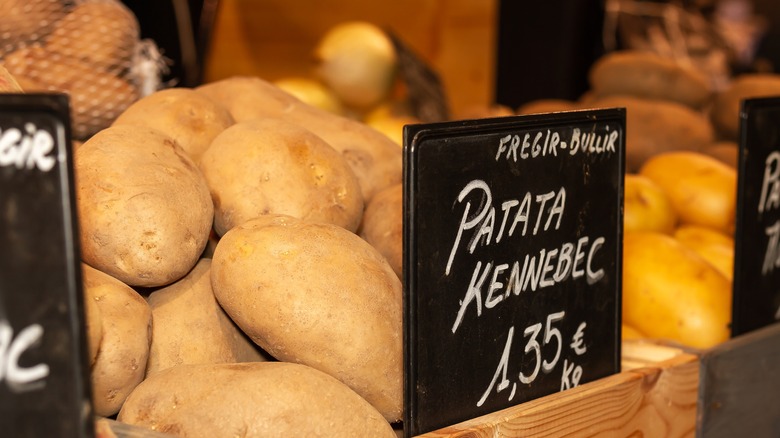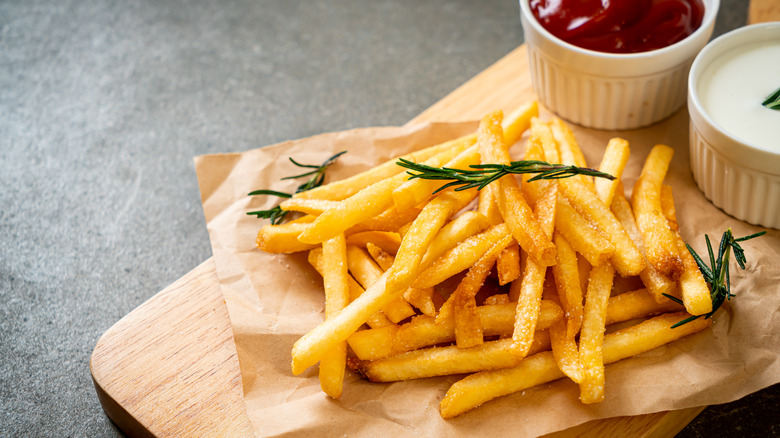What Makes Kennebec Potatoes Different From Russets
Potatoes might all seem similar at first but, once you start digging deeper into them, you'll find a fascinating array of varieties, each with unique purposes in the kitchen. Some types are great for boiling, others shine in the frying pan, and a few are perfect for making mashed potatoes, just to name a few uses. Two of the most famous potato types are Kennebec and russet potatoes. Here's how these two spuds differ.
Kennebec potatoes, often referred to as "all-purpose potatoes," were crossbred in association with the USDA and introduced in Maine around 1948. When it comes to frying, you'd be hard-pressed to find a better choice than these. Kennebecs have thin and light skin, unlike russets, which have dry, thick, and dark skin. The medium starch level and low water content of Kennebec potatoes make them perfect for frying in oil.
On the flip side, russet potatoes (sometimes referred to as Idaho potatoes) have a rich history dating back to the 1870s. This potato type started out as the russet Burbank before being diversified into many sub-types. Rather than frying, russets are known for their exceptional performance in the oven. The combination of their high starch content and thick, moisture-trapping skin results in a beautifully crispy outer layer and a soft, fluffy interior when baked. If you're aiming to whip up some delicious baked or mashed potatoes tonight, you can't go wrong with russets!
Can Kennebec and russet potatoes be used interchangeably?
One question that'll naturally come up when comparing Kennebec and russet potatoes is whether or not they can be used interchangeably. After all, potatoes are potatoes, right? The short answer is: Yes, but with some caveats.
If you're making French fries, Kennebec potatoes are usually the top choice, but that doesn't mean you can't use russets, too. Russets actually make for crispier fries due to their dryness and high starch content. The reason why Kennebecs are typically preferred for fries is because they result in crispy exteriors with creamier, softer insides. Ultimately, your choice depends on whether you prefer classic crispy fries (russets) or thicker, more flavorful fries (Kennebecs).
When it comes to baking, you can use both Kennebecs and russets. But, keep in mind that the thicker skin of russets will give you baked potatoes that have crispier outer layers and softer interiors than those that are made from Kennebecs.
When we say "potatoes are potatoes," it's not entirely wrong. Even though Kennebecs excel at making fries, you can still make a mean baked potato with them. Similarly, russets can be used to make some delicious fries. Each type outdoes the other in certain ways and has preferred uses. So, unless you're up for some experimenting, the guideline (not rule!) is: Kennebecs are for frying and russets are for baking.

